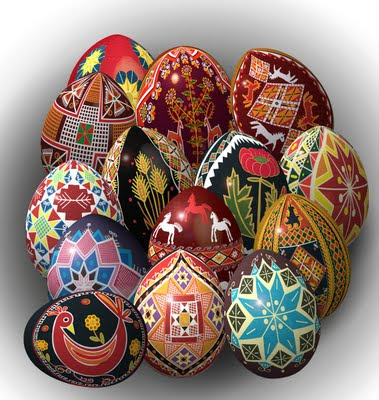I had worked a little bit with Adobe Illustrator years ago, in another job. Recently, I've had a chance to get into it again as part of the CS4 collection. A couple of things really made it click for me. One was access to the wonderful on-line training at
Lynda.com. The other was an interest in the colorful, geometric Ukrainian folk art that one typically sees on Ukrainian Easter eggs (pysanky) and embroidery. The typical venue for embroidery is the
rushnyk, which is a kind of ritual towel.

I've had a lot of fun learning to duplicate some of my favorite patterns into Illustrator. After learning to create and transform geometric shapes, I challenged myself to duplicate the actual look of the stitching.
Here is an example of my most elaborate work to date. This is a jpeg of a greatly reduced image. A single pair of the diamond patterns in Illustrator is about 800 points high. Once I create the core of the pattern, I convert it into a "brush" in Illustrator, after which I can apply the brush to any line or arc.
Since these brushes only repeat along on axis, I cannot make decent rectangles. I can, however, make some pretty cool circles.

I've found that because I'm building these patterns out of imitation cross-stitches (each is a colored "X"), the overall colors are somewhat pale. This example, for instance, is composed of black, red, green, yellow, violet, blue, and organge. Pretty hard to tell from this distance.
When I tried to render a complex pattern such as this into Photoshop, I frequently run out of system memory.
Right: a previous attempt at creating pseudo-cross-stitch. 




